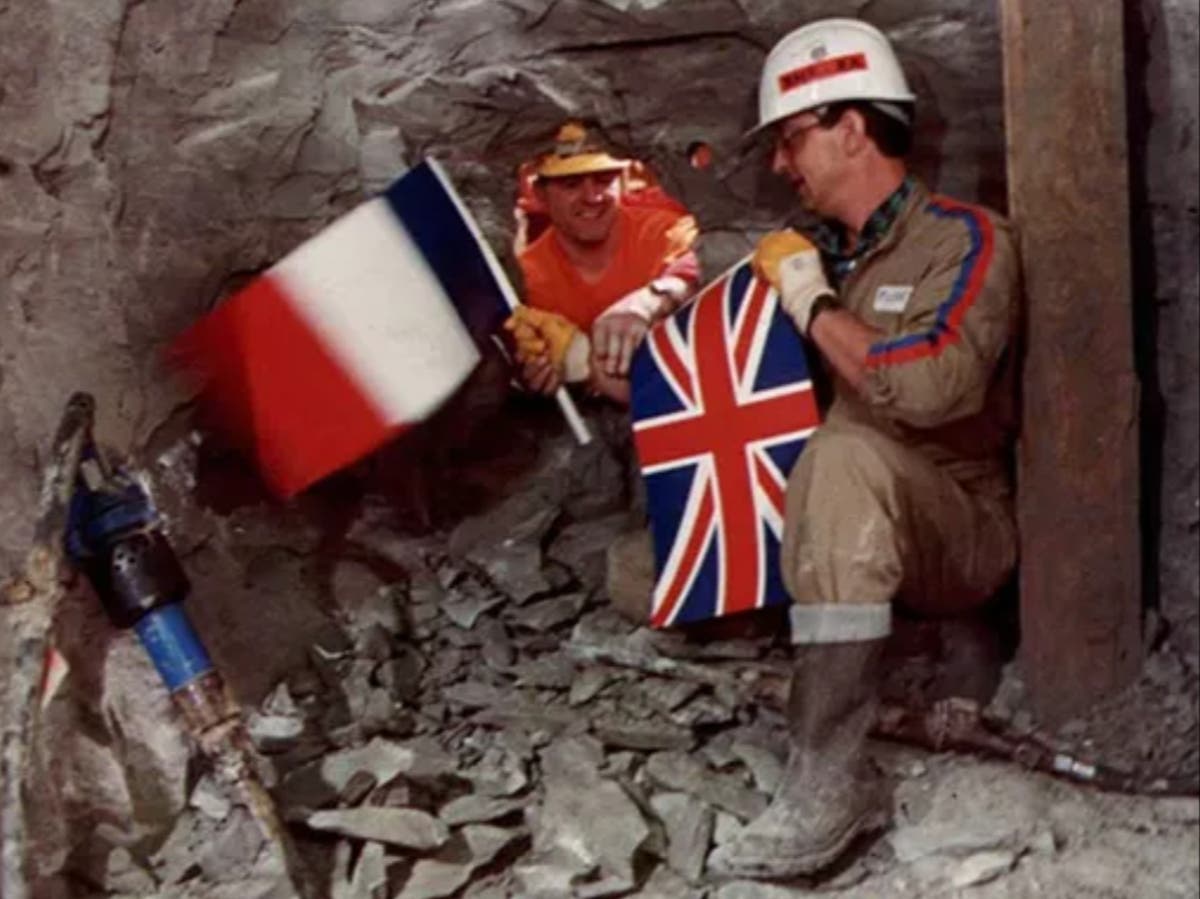Thirty years ago Queen Elizabeth II and French president Francois Mitterand officially opened the Channel Tunnel between Folkestone in Kent and Calais in northern France.
So how much has the link transformed travel? Unfortunately, it’s been a tale of broken promises so far in terms of direct services between the UK and Continental Europe.
The problem for proponents of terrestrial transport is that there has been a revolution in travel over the past 30 years, but it’s been the transformation of aviation.
Eurotunnel is the company that owns the infrastructure and runs LeShuttle car- and coach-carrying service from Folkestone to Calais. It takes about 20 million people a year through the tunnel in these vehicles, as well as on Eurostar trains from London to Paris, Brussels and Amsterdam.
Yet that is a tiny proportion of the number of people who fly to and from the UK.
The only prospect of making good on proper trans-continental connectivity from the UK: cutting costs and opening up to new budget operators.
What was the original plan?
When Eurostar was first envisaged the idea was to have trains from Glasgow, Edinburgh, Leeds, Manchester, Birmingham, Cardiff and Plymouth direct to Paris and Brussels.
One third of a billion pounds was sunk into improving infrastructure and buying the trains. For years a depot outside Manchester Piccadilly stood empty, even though it had a sign reading “Le Eurostar habite ici” – Eurostar lives here.
The Regional Eurostar rolling stock was built, but not a single train ever ran to Europe from anywhere other than London.
Even on the routes from the capital, the number of destinations has shrunk in recent years. While Rotterdam and Amsterdam have been added, Lyon, Aix-en-Provence, Marseille and Disneyland Paris have been taken away – and the two stations in Kent remain closed with no plans to reopen them.
What’s the problem?
Budget aviation is very cheap (I have just paid £15 to fly from Manchester to Vienna) and the charges for running passenger trains through the Channel Tunnel are very expensive. The fare on Ryanair wouldn’t even meet the payment that train firms have to make to Eurotunnel for less than half-an-hour in the Channel Tunnel.
The company earns around £17 for each passenger on every Eurostar train, as well as a small additional amount to cover the cost of electricity.
For a rail revolution, the fee needs to be cut so that the Channel tunnel can be opened up to low-cost operators. The airlines show that where there’s competition, everyone wins.
At present, if you book late you’ll pay around £200 one way on Eurostar between London and Paris. That’s typically three times the cost on a budget airline, buying a day ahead.
Wouldn’t Eurostar be damaged by competition?
No, all the evidence from aviation is that the firm would actually be improved by competition, and that its passenger numbers would grow. The firm was severely hit by the Covid pandemic, but since then it has been thriving by dominating the market on its key links from London to Brussels and Paris.
What does Eurotunnel say?
The company wants to dramatically expand the range of routes – including direct trains to Germany. In December 2023, Yann Leriche, chief executive of the Channel Tunnel firm, said he was keen to see direct links from London to a range of German and Swiss cities, including Cologne, Frankfurt and Geneva.
Is there room for them?
Yes. At present there’s up to 12 trains per hour each way through the Channel Tunnel, a mix of Eurostar, Eurotunnel car-carrying shuttles and freight services. That could increase to 16, theoretically allowing extra trains every 15 minutes to run from London into Germany, Switzerland and deeper into France. High Speed One, the line from London to the Channel Tunnel in Kent has even more capacity – it could treble the number of trains and still have room for more. But it all depends on new entrants coming in.
There’s been talk about a new Spanish company competing between London and Paris, but so far only rumours. So until further notice Eurostar will have the link to itself, passengers will pay a fortune and more of us will end up flying.
Today there are more than 50 flights between the London airports and Frankfurt alone, and zero direct trains. With a connection in Brussels, the journey takes six-and-a-half hours. Direct trains would take that down to five hours. But you may be waiting quite some time …
